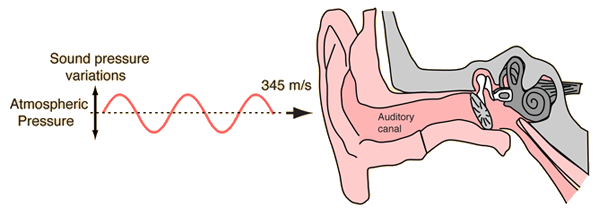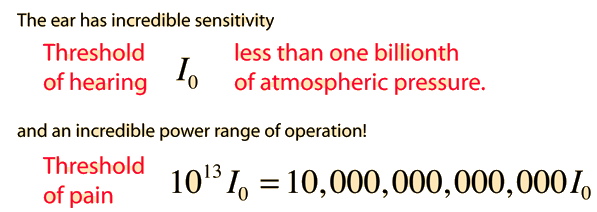Sensitivity of Human Ear
The human ear can respond to minute pressure variations in the air if they are in the audible frequency range, roughly 20 Hz - 20 kHz.


It is capable of detecting pressure variations of less than one billionth of atmospheric pressure. The threshold of hearing corresponds to air vibrations on the order of a tenth of an atomic diameter. This incredible sensitivity is enhanced by an effective amplification of the sound signal by the outer and middle ear structures. Contributing to the wide dynamic range of human hearing are protective mechanisms that reduce the ear's response to very loud sounds. Sound intensities over this wide range are usually expressed in decibels.
Hearing concepts
| HyperPhysics***** Sound | R Nave |



